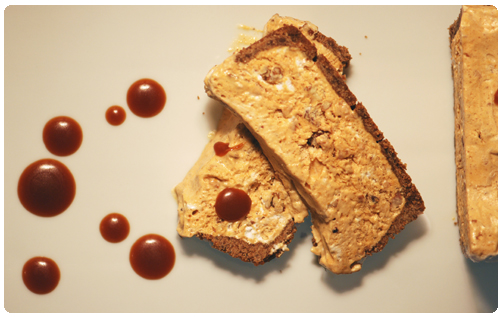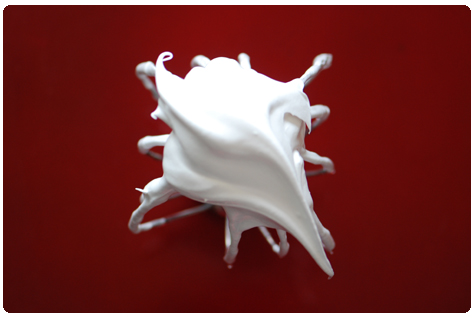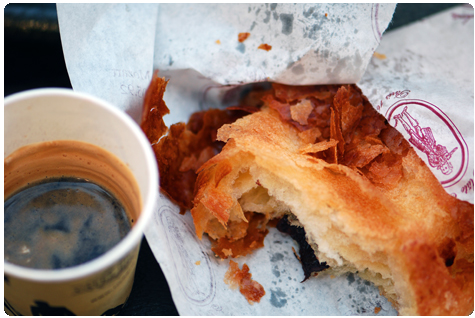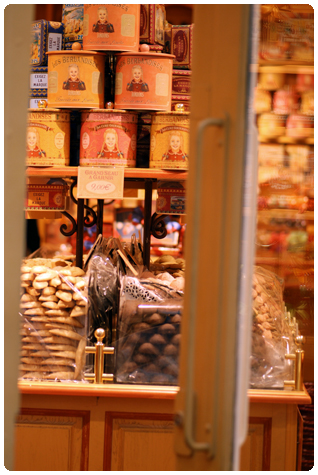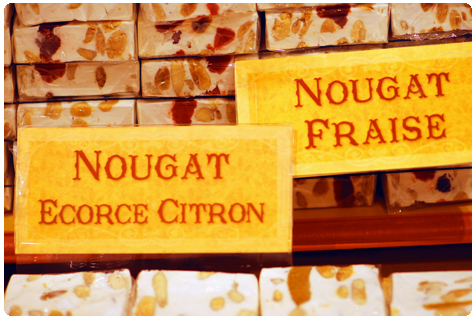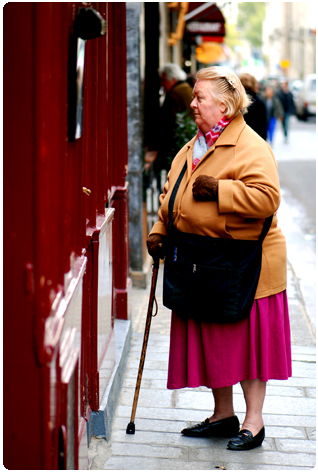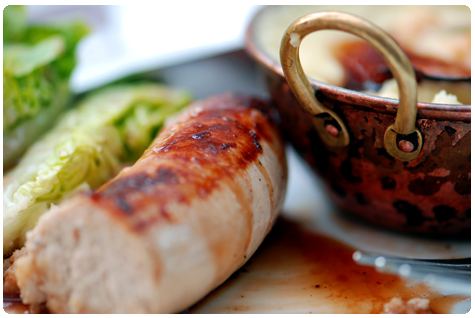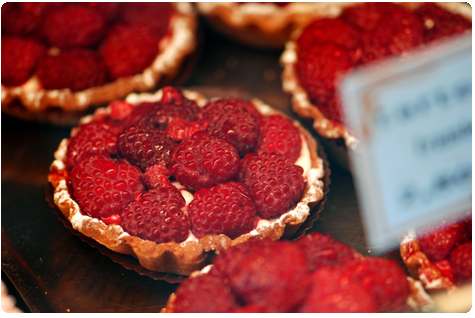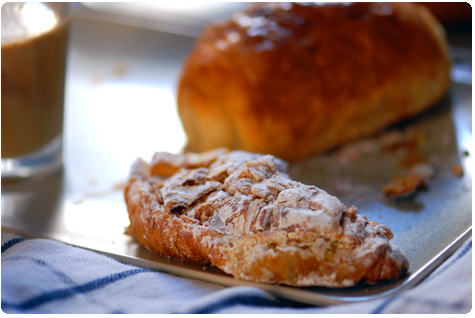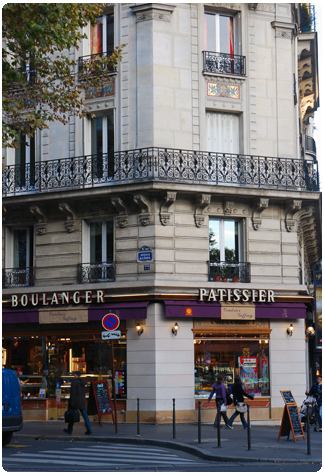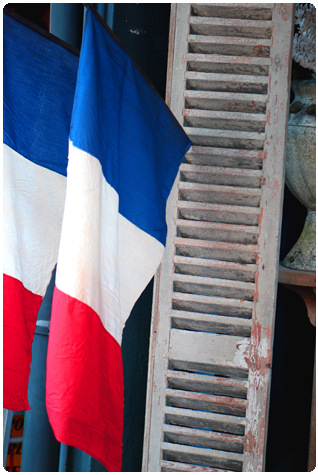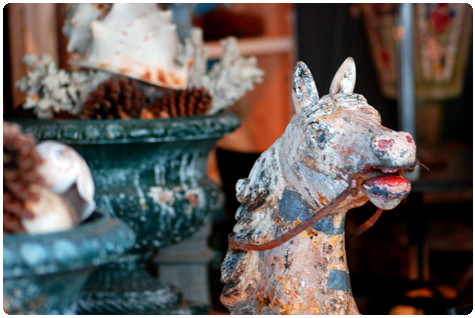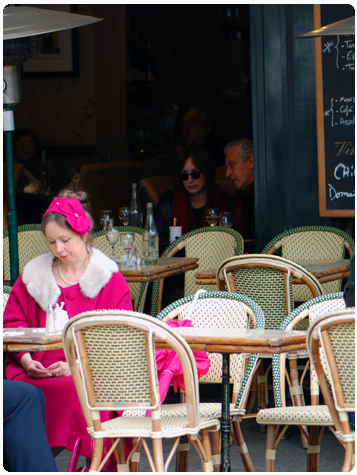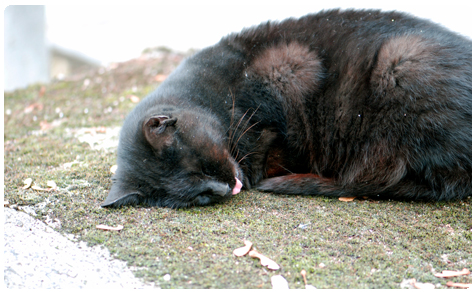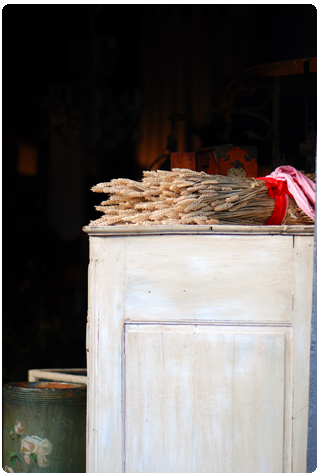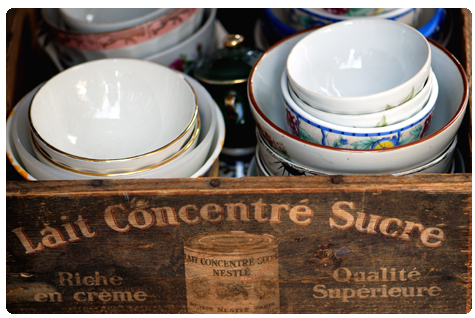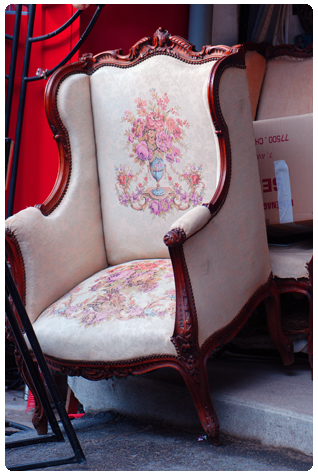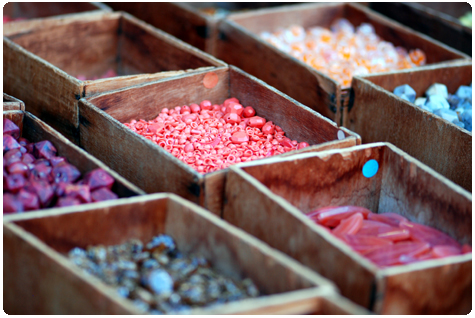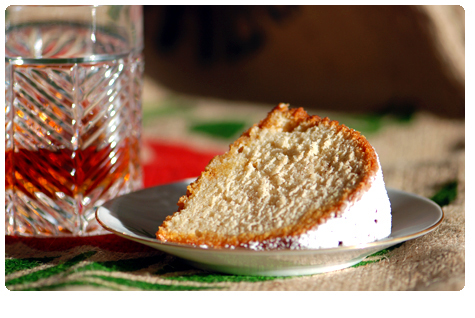I heart Nigella Lawson. The gusto and relish with which she eats are contagious—like laughter. The recipe that follows is an adaptation of “Lemon Meringue Cake” from Nigella’s Feast. I was looking through the book a few weekends ago while visiting family in D.C. and swooned when I saw the photo: a gold-tinged cloud of cake oozing bright yellow silk. The cake is baked and assembled in this manner: two cake pans get a layer of cake batter and a layer of French meringue spread on top. Once baked and cooled, lemon curd and whipped cream are sandwiched between the cake layers for a cake, custard, cream, and meringue miracle. Perfect for me, as I continue having my crush on all things whippy and white,but, also, what dreamier than a big, fluffy, sticky cake sandwich?
As you know, I recently posted a pastel de limón recipe and, wanting to avoid repetition and bore you, I settled on a filling of goat’s milk dulce de leche, toasted and chopped pecans, and a sprinkle of Maldon salt. Having no guests handy, the leftover cake would have to be refrigerated for a few days, so the whipped cream needed to be stabilized to avoid it becoming a sad, weeping mess. A bit of gelatin and cream cheese will keep this dessert fresh and pretty for about 3 days (probably longer, but you’ll surely have eaten the whole thing by then).
An announcement to Future Dinner Party Guests: this was so intensely, close-your-eyes-at-first-bite delicious that you will be seeing it more than once. However, I do intend to vary the fillings…Nutella and strawberries, dark chocolate ice cream and cherries, banana pudding and toffee, poached figs and custard, etc.
NIGELLA LAWSON’S PERFECTION CAKE
Originally published as Lemon Meringue Cake
Very Important Notes: You can replace the goat’s milk dulce de leche with regular dulce de leche or fillings of your choice—see some of my suggestions above.
– Gelatin needs to be dissolved in warm water, but if you add warm water to your chilled whipped cream, you’ll defeat the purpose of the chilled cream, no? Be sure to cool the gelatin to room temperature, and don’t be tempted to pop it in the refrigerator or freezer because it’ll turn boing-y and won’t mix into your cream, capisce?
1 tablespoon unsalted butter, softened, for greasing the cake pans
4 large eggs, separated
1½ cups plus 1 teaspoon sugar
8 tablespoons unsalted butter, cut into 8 pieces and softened
¾ cup unbleached all-purpose flour
2 tablespoons cornstarch
1 teaspoon baking powder
½ teaspoon baking soda
½ teaspoon table salt
Grated zest of 1 lemon plus 4 teaspoons lemon juice
2 teaspoons milk
1 teaspoon vanilla extract
1 teaspoon unflavored gelatin
2 tablespoons water
4 tablespoons cream cheese, softened
½ cup confectioners’ sugar
1 cup heavy cream, chilled
½ goat’s milk dulce de leche
½ cup toasted and chopped pecans
½ teaspoon Maldon salt
– Position an oven rack in the middle of the oven. Preheat the oven to 400˚F. Line and grease the bottoms of 2 8-inch round cake pans with parchment paper and 1 tablespoon butter.
– Place the egg yolks, ½ cup of the sugar, butter, flour, cornstarch, baking powder, baking soda, 1/4 teaspoon salt, and lemon zest in food processor and pulse until combined. Add the lemon juice and milk and process once again until combined.
– Divide the batter equally between the prepared pans. It is a skimpy amount of batter, but that’s how it’s supposed to be. Simply spread as evenly as possible with a rubber spatula.
– Place the egg whites and the remaining ¼ teaspoon salt in a clean, dry mixing bowl. Beat the whites on medium speed with an electric mixer until they loosen, about 1 minute. Increase the speed to medium-high and whisk until soft peaks form, 2 to 3 minutes. Slowly add the remaining 1 cup sugar and continue to whisk until stiff, glossy peaks form, 2 to 3 minutes more. Add ½ teaspoon of the vanilla and whisk just until incorporated, about 15 seconds more. Dived the stiff, glossy whites between the 2 pans, spreading straight on top of the batter layer. Leave 1 smooth, then, peak the second one.
– Bake 10 to 20 minutes until the meringue tops are golden and a cake tester comes out clean when inserted. Transfer the cake pans to a cooling rack and cool completely, about 1 hour. While the cake is cooling, chill a (metal) mixing bowl and whisk so they’re ready for making the whipped cream. Carefully unmold the flat-topped cake onto a cake stand or plate, meringue-side down.
– Combine the gelatin and water in a small bowl. Microwave until the gelatin dissolves, about 20 seconds. Cool to room temperature, about 5 minutes. Place the cream cheese, ¼ cup of the confectioners’ sugar, remaining ½ teaspoon vanilla, and dissolved gelatin in the chilled bowl and whisk on medium speed until whippy, about 2 minutes. Add the cream and whisk just until thickened, about 2 minutes.
– Drizzle the dulce de leche evenly over the inverted cake and top with pecans and salt. Spread the whipped cream on top, to the edges. Carefully invert the second cake onto the palm of your hand, then, gently turn over so the meringue is facing up, and place it on top of the whipped cream. Sift the remaining ¼ cup confectioners’ sugar over the cake and serve. Refrigerate leftovers for up to 3 days.
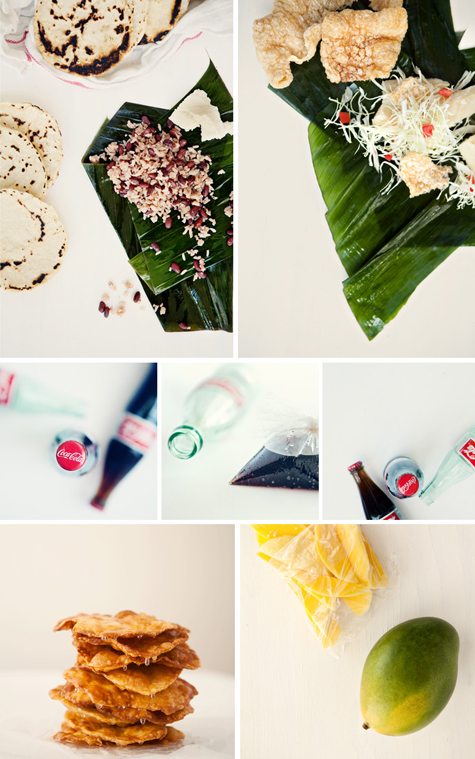 People often ask me what Nicaraguan food is like. My immediate response is usually “It’s not very pretty…” But I’ve changed my mind. I got together with the very talented photographer Kristin Teig and came up with these images—Nica food cleans up nice!
People often ask me what Nicaraguan food is like. My immediate response is usually “It’s not very pretty…” But I’ve changed my mind. I got together with the very talented photographer Kristin Teig and came up with these images—Nica food cleans up nice!
